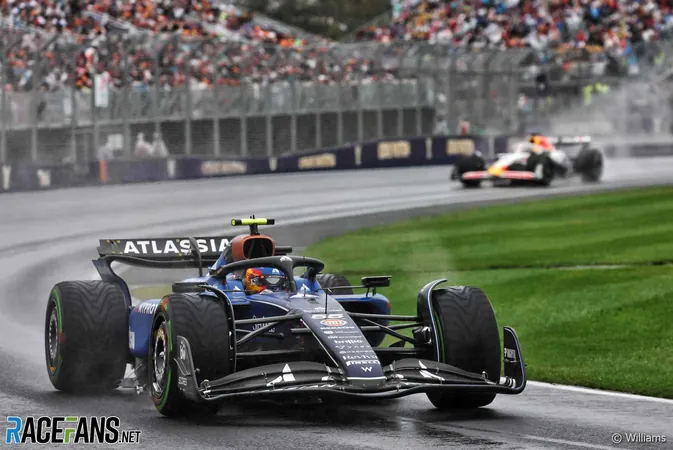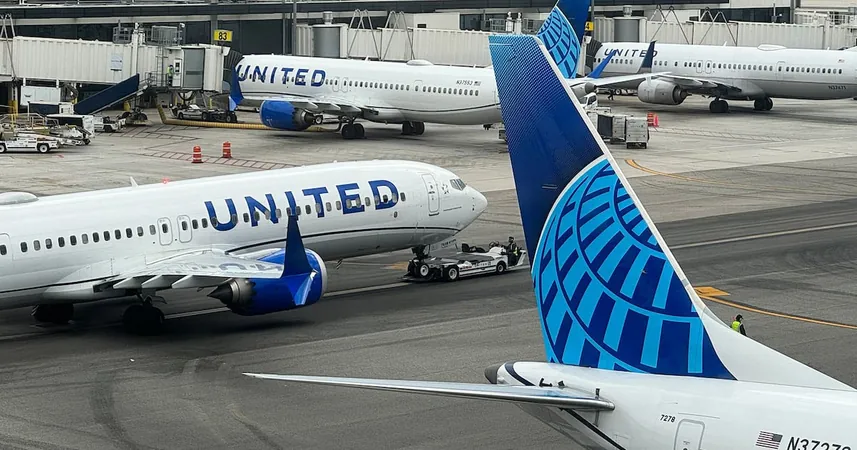
Torque Spike or Slippery Black Line? The Disputed Causes of Sainz’s Crash at the Australian GP
2025-03-16
Author: Jacob
Introduction
Carlos Sainz Jr.'s unfortunate crash during the Australian Grand Prix has ignited a spirited debate among teams regarding the true cause of the mishap that took him out of the race. While Williams is investigating the contribution of Sainz’s car to the incident, competitors suggest that a seemingly innocuous black painted line might have played a crucial role.
The Crash Incident
The crash occurred at the notoriously tricky Albert Park circuit, where Sainz lost control of his FW47 at the end of the first racing lap under damp conditions. As he approached the notorious turn 14, his car abruptly spun and collided with a barrier.
Torque Spike Theory
Williams’ team principal, James Vowles, has indicated that they will thoroughly examine the possibility that a torque spike during Sainz's upshift could have exacerbated the car's instability. "It was just a simple upshift at a very difficult point in time on a slippery track," Vowles mentioned in a team video. “We need to ensure we provide stable platforms for all our drivers in all circumstances.”
The Black Line Factor
Conversely, Sainz's former team, Ferrari, has a different theory. They point to the presence of a slippery black line on the racetrack that may have caught Sainz off guard. This observation was relayed to Charles Leclerc during the race, allowing him to adjust his approach and avoid a similar fate. Leclerc's race engineer, Bryan Bozzi, stated, "Carlos spun in turn 14 on the black line," emphasizing the importance of avoiding that area of the track.
Advice from Competitors
Hamilton's race engineer also echoed this warning, advising the seven-time world champion to "avoid the black paint line inside 14," directly linking it to Sainz’s spin.
Sainz's Reflection
In reflection, Sainz himself pointed out that there were multiple factors that led to the incident. "We managed to spot it on the data and see exactly what happened and what caused the situation," he shared. Despite the setback marking a rocky start to the season, Sainz expressed confidence in his performance moving forward: "I’m quick, I feel comfortable in the car, and now we need to get the year started."
Conclusion
This incident highlights the razor-thin margins that define Formula 1 racing, where even the slightest miscalculation can have significant consequences. As teams analyze the data and gather insights, both Sainz and fans will be eager to see how the rest of the season unfolds. Will the lessons learned from this crash help propel Sainz to success in the upcoming races? Only time will tell!









 Brasil (PT)
Brasil (PT)
 Canada (EN)
Canada (EN)
 Chile (ES)
Chile (ES)
 Česko (CS)
Česko (CS)
 대한민국 (KO)
대한민국 (KO)
 España (ES)
España (ES)
 France (FR)
France (FR)
 Hong Kong (EN)
Hong Kong (EN)
 Italia (IT)
Italia (IT)
 日本 (JA)
日本 (JA)
 Magyarország (HU)
Magyarország (HU)
 Norge (NO)
Norge (NO)
 Polska (PL)
Polska (PL)
 Schweiz (DE)
Schweiz (DE)
 Singapore (EN)
Singapore (EN)
 Sverige (SV)
Sverige (SV)
 Suomi (FI)
Suomi (FI)
 Türkiye (TR)
Türkiye (TR)
 الإمارات العربية المتحدة (AR)
الإمارات العربية المتحدة (AR)